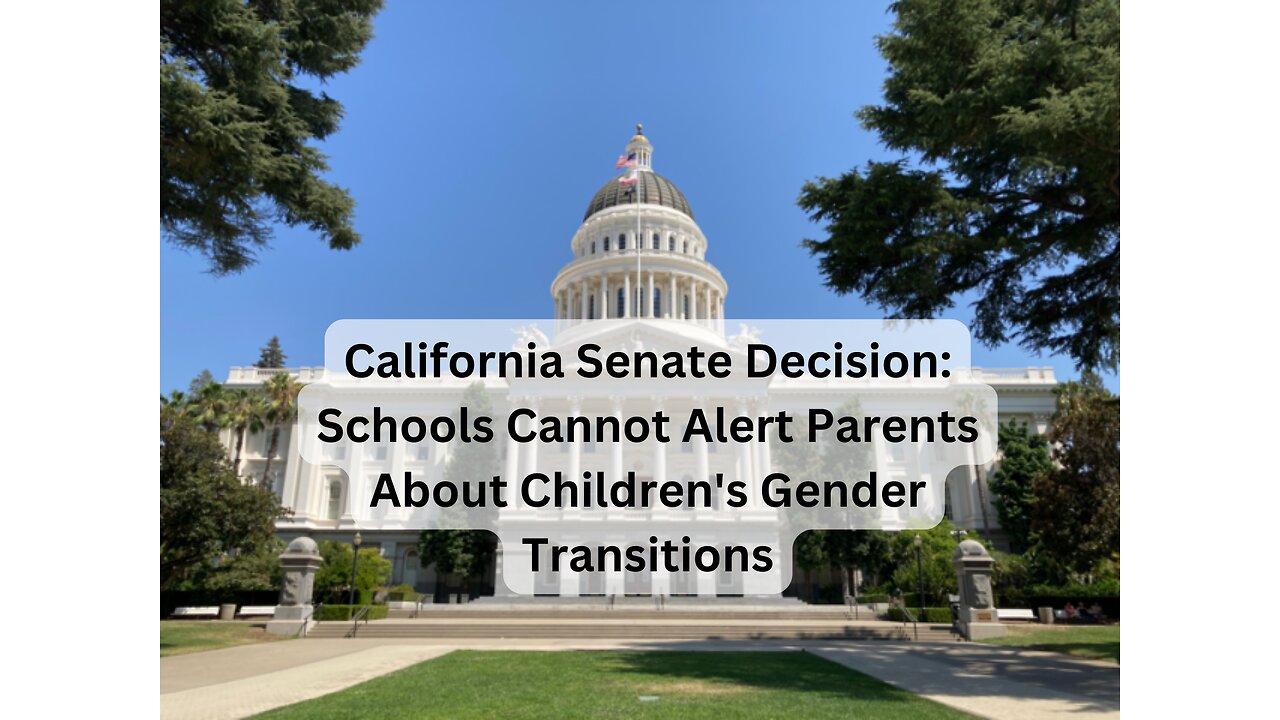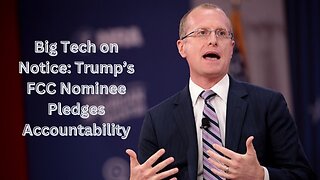Premium Only Content

Shocking Move: California Senate Bans Schools from Informing Parents on Gender Transitions
The California Senate has passed Assembly Bill 1955, a measure preventing school districts from notifying parents about their children's "social" gender transition at school without the child's consent. The bill, approved by a 29-8 vote, will now return to the Assembly for final approval of amendments. This legislation responds to policies in some California school districts that require notifying parents if a student undergoes a "social" gender transition, where the student publicly identifies as a different gender with affirmation from teachers and peers.
AB 1955 aligns with guidance from California’s Department of Education, which mandates that schools must consult with transgender students to decide who will be informed of their transgender status, including their families. Proponents, like Democratic Senator Susan Eggman, assert that the bill fosters a supportive environment crucial for students' self-discovery. Eggman emphasized the importance of allowing students to explore their identities without undue interference, stating that schools should not act as "the gender police" but rather ensure safety and affirmation for all students.
Opponents of the bill argue that parents have a right to be informed about significant aspects of their children's development, including issues related to gender identity. They warn that the bill represents excessive state intrusion into family affairs and sets a concerning precedent. Recent incidents, such as Montana parents losing custody of their child for opposing her gender transition, underscore these fears. Republican Assemblyman Jim Patterson criticized the bill for creating a barrier between children and parents, insisting that the state should not assume control over parental roles.
Detractors label AB 1955 as "unconstitutional, morally corrupt," and "an embarrassment for our state," reflecting deep divisions over the appropriate role of schools and parents in addressing students' gender identities.
-
 1:33
1:33
Conspiracy Chronicle
2 months agoTrump Declares War on Big Tech Censorship with Bold FCC Pick
1151 -
 2:42:30
2:42:30
TimcastIRL
9 hours agoKash Patel CONFIRMED, Deep State PANICS, Mitch McConnell To RETIRE w/ Kevin Smith | Timcast IRL
166K299 -
 1:04:47
1:04:47
Candace Show Podcast
13 hours agoBecoming Brigitte: The Epilogue
114K144 -
 3:43:51
3:43:51
Alex Zedra
8 hours agoLIVE! Come Play WoT with me!
44.3K11 -
 5:22:49
5:22:49
Drew Hernandez
16 hours agoDOGE EXPOSES $2 BILLION SCHEME LINKED TO STACEY ABRAMS?!
70.1K45 -
 1:27:59
1:27:59
Kim Iversen
11 hours agoRFK Jr Declares No More Cheetos on Welfare? | Yale Confirms Long Covid Is Actually Vaccine Injury!
101K112 -
 1:08:43
1:08:43
The Charlie Kirk Show
8 hours agoTHOUGHTCRIME Ep. 74 — Charlie's Campus Return? Robo-Butlers? Garden of American Heroes?
87.1K18 -
 1:09:53
1:09:53
Slightly Offensive
9 hours ago $7.59 earnedIs the US Headed for MORE WAR Under TRUMP? | Guest: Scott Horton
51.3K13 -
 58:29
58:29
The StoneZONE with Roger Stone
8 hours agoRoger Stone Hails Confirmation of Kash Patel, Trashes Schiff for Attacks On Patel | The StoneZONE
57.7K21 -
 48:44
48:44
Man in America
13 hours agoA MASSIVE Global Financial Reset Is Coming—Are You Ready?
45.3K21